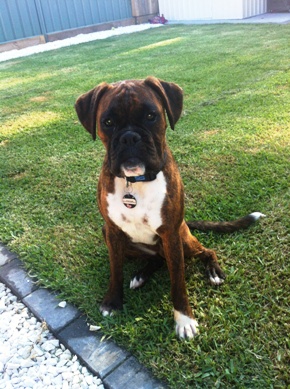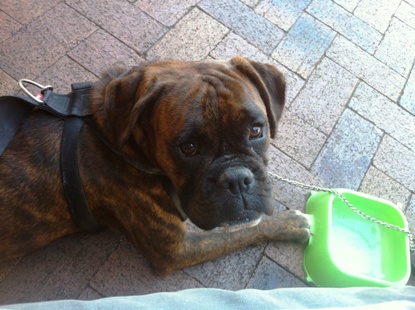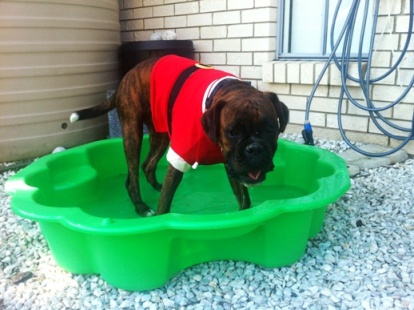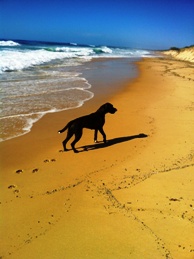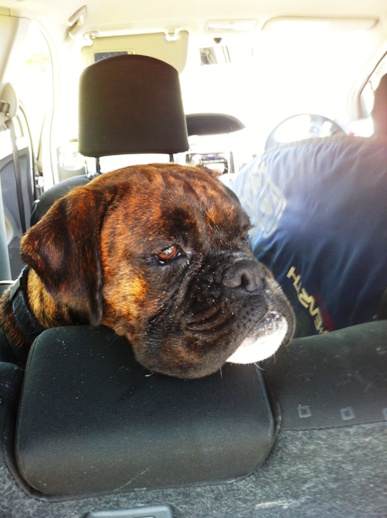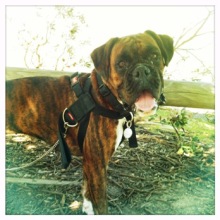Olly – An Ingrown Eyelash
Name: Olly
Age: 1yr old
Weight: 21kg
Breed: Boxer
Sex: Female, desexed
History: Olly is a beautiful Boxer who was booked in for her de-sexing surgery last month. On arrival to the clinic, Olly was weighed and then taken to the treatment room to be checked over by our surgery vet for the day, Dr. Leonie.
Examination: On examination, Dr. Leonie heard a slight heart murmur (turbulence heard over the heart when listened to with a stethoscope which can indicate heart disease). She also noticed that Olly had watery discharge coming from both her eyes. Dr. Leonie phoned Olly’s mum to have a chat about her findings. Firstly Dr. Leonie mentioned that she could hear a grade 2 heart murmur. Dr. Leonie discussed that there could be an increased risk with the general anaesthetic for Olly, but if Olly’s mum was happy to proceed with the surgery, then we could do so. Dr. Leonie also mentioned that Ollys’ eye’s were a bit weepy and was told by Olly’s mum that Olly sometimes get “Boxer Weepy Eye”, but that it had suddenly flared up over the last 24hrs or so. Dr. Leonie advised that she would have a more thorough look at Olly’s eyes when Olly was asleep, as she was a bit too wriggly to examine awake.
Treatment: Olly’s desexing surgery went ahead smoothly and without any complications. Her anaesthetic was closely monitored by Vet Nurse Donna.
Once her surgery was finished, Dr. Leonie began to examine the eyes. Under very close examination she found a few tiny course eyelashes growing on Ollys’ inner eyelids.
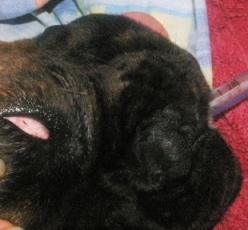
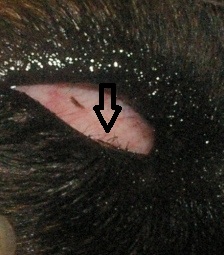 The picture on the left is of Olly under the anaesthetic – here you can see the eye with the 3rd eyelid over the eyeball. The picture on the right shows the tiny hairs.
The picture on the left is of Olly under the anaesthetic – here you can see the eye with the 3rd eyelid over the eyeball. The picture on the right shows the tiny hairs.
These tiny eyelashes are called Distichia. Distichia is a mutation that can occur in humans and dogs, where hairs protrude from the Meibomian Gland (located on the inner margin of the eyelid) and grow towards the eye ball surface. If they are few and soft enough, they can go by un-noticed with no discomfort to the animal. However, if they are stiff, long or there are too many, they can cause major discomfort and pain. In severe cases they can cause corneal ulcers (severe abrasions to the outer surface of the eye).
Dr. Leonie decided to pluck the hairs out whilst Olly was still asleep. This would give temporary relief from the hairs and would give Dr. Leonie time to discuss with Olly’s owner the more permanent option of cryosurgery. Cryosurgery is the procedure of freezing abnormal tissue using liquid nitrogen. This will then permanently stop the hairs from growing back. This needs to be done six weeks after the plucking, to give the hair time to grow back before it is done. Olly’s owner was going to have to think about it and let us know if she would like to do this in the future.
Olly’s mum may also take her to a cardiologist to get a thorough check of her heart, but for now her heart murmur will be checked at her regular health checks and at any other time she visits the vet.
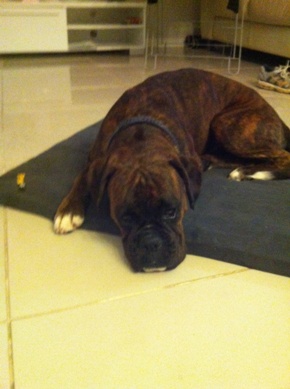 This is a photo of Olly recovering from her desexing surgery.
This is a photo of Olly recovering from her desexing surgery.
Below are some other lovely photo’s sent to us by Olly’s mum. As you can see she is a much loved, adorable member of the family.
